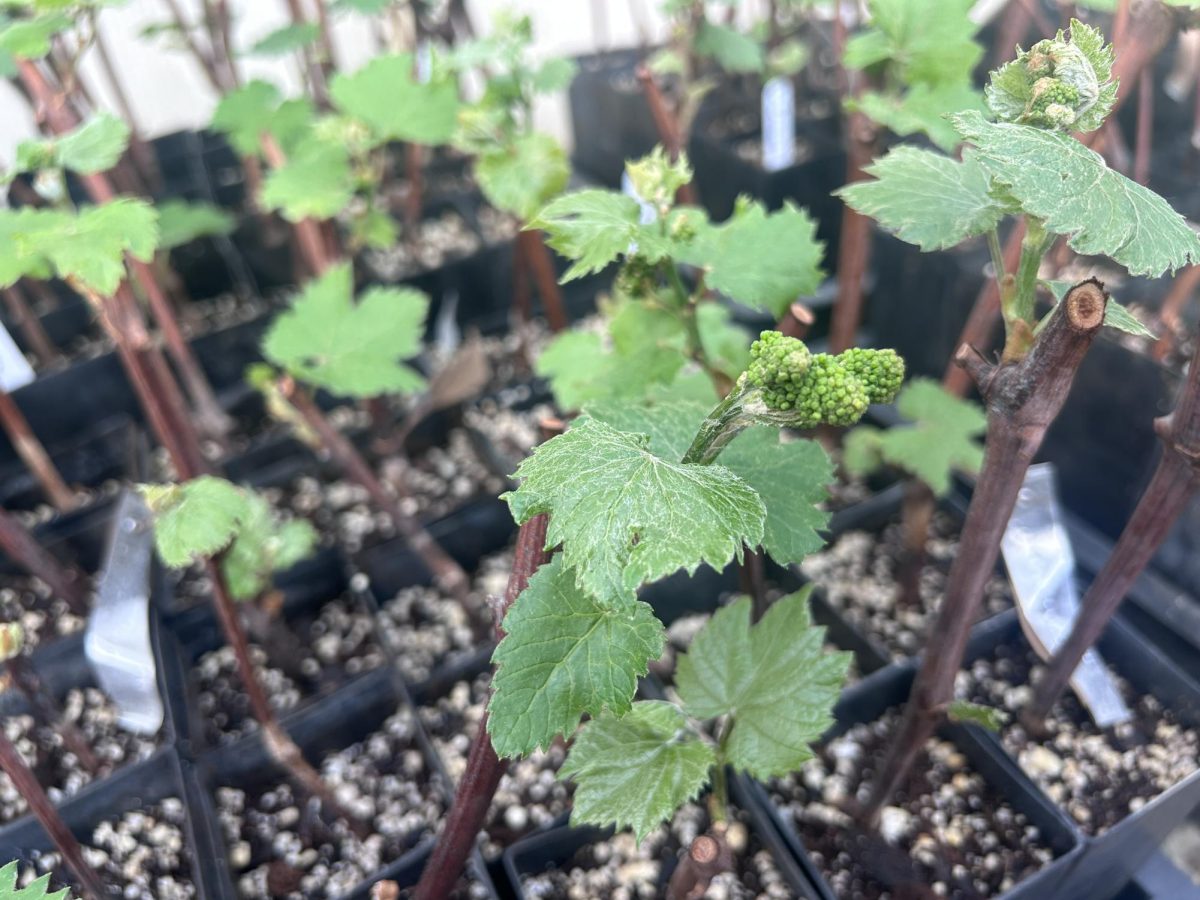
Rachel Hoppe
Researchers use the florets of a grape to begin the breeding process.
The University of Minnesota Horticulture Research Center (HRC) in Excelsior, Minn., breeds new varieties of wine and table grapes that can withstand cold Minnesota winters.
The HRC is renowned for developing new breeds of apples, such as the Honeycrisp apple, but its wine and table grape program is lesser-known, said HRC researcher Erin Treiber.
The last table grape released by the University was in 1977, and the last wine grape created by the University was in 2022, according to the University Enology Department.
The most important part of developing grapes in Minnesota is ensuring they are cold hardy, meaning they can withstand harsh Minnesota winters and extremely cold temperatures, Treiber said. Disease resistance and the grapes’ flavor are also important when it comes to developing new grapes.
Grapes are a perennial crop, meaning they continue to grow throughout the years without needing to replant, Treiber said. Small buds grow at the base of the grapevine, and the buds need to survive through the winter to produce fruit again in the spring and summer.
John Thull, a researcher at the HRC with expertise in grapes, said grapes are cross-pollinated based on qualities the breeders want replicated in a new variety of grapes.
Cross-pollination happens through the plants’ flowers, Thull said. Grapes have a perfect flower, so they have both a stamen and a pistil — the male and female parts of the flower.
The stamen holds the pollen and is removed with tweezers from a floret before it turns into a flower so it cannot self-pollinate before the researchers use it to create a new grape, Thull said. The stamen is then put in a plastic bag to seal it off from making contact with any other pollen.
When the flowers bloom later in the season, the researchers collect pollen from the blooming flowers and replace it with the pollen from the previously collected stamen, Thull said.
“There’s no genetic splicing, there’s no GMO stuff that we’re doing,” Thull said. “We’re just doing classical breeding and seeing what comes out.”
Most grapes are crossbred with Vitis riparia, a cold-hardy grape native to Minnesota, Thull said.
Treiber said the problem with Vitis riparia is that it does not have an appealing flavor, with people saying it tastes more like a vegetable than a fruit.
Vitis riparia is cross-pollinated with European varieties of grapes known for their good flavor, but they do not thrive in colder climates, Thull said.
“If you cross those European varieties with the native grapes, some percentage of those should be cold hardy,” Thull said. “In the next generation, some of the seedlings from that crossing retain the hardiness of the native varieties and the characteristics of the European ones.”
When creating grapes for wine, the color of the grapes is also important, Jenny Thull, a researcher at the HRC, said.
“Historically, the hybrids that we’ve made have been very dark, almost a dark purple, which isn’t a very pleasant color to look at,” Jenny Thull said. “So something that has a lighter color is better.”
Jenny Thull said the research team also prioritizes breeding flavorful grapes, so when winemakers produce wine, it does not have to be manipulated by using oak barrels to alter the flavors.
John Thull said it takes at least five years before the grapes are ready for tasting, but it takes longer to know if a new variety of grapes is good for eating or wine production. By the seventh year of vine growing, the researchers usually have a better idea of what the grape is like because of how tall it is at that point, but it is still difficult to evaluate at that point because the vine is still establishing itself.
“By the time you can make a batch of wine from it, that’s like year 10,” John Thull said. “It’s a long process, but in fresh, eating grapes it would be a little bit faster than 10 years.”
The HRC also produces wine from the grapes they grow in their winery, John Thull said.
One vine of grapes only produces between a half gallon to a gallon of wine, so when working with newer breeds of grapes, vineyards make at most five bottles of wine because only one vine of that grape breed exists in the world.
John and Jenny Thull, who are married, started working on grapes 20 years ago.
“We would taste wines and our teeth would be black from the inky colors from the wild grapes,” Jenny Thull said. “We’ve gotten into more refined red wine colors, and it’s exciting for sure.”
